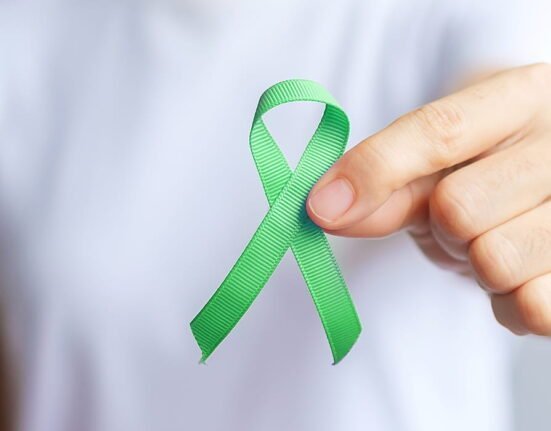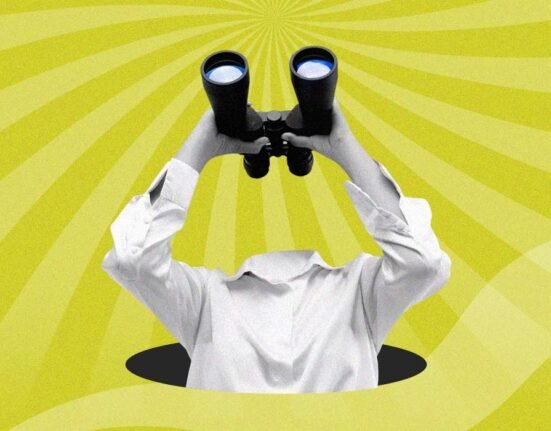Angelman Syndrome (AS) is most linked with genetic mutations of the UBE3A gene, located on chromosome 15, in the 15q11-q13 locus. The gene plays a role in neurodevelopment and has a parent-of-origin expression pattern. Maternal UBE3A is expressed in the neurons, and the paternal one is silenced in healthy developing patients due to genomic imprinting; thus, maternal UBE3A plays a role in normal brain function.
Almost 70% of cases of AS are due to deletions of this maternal part of the gene, and mutations of the UBE3A gene itself are responsible for another 10-20%, and these interfere with its normal functioning. Other causes are due to imprinting failure or paternal uniparental disomy, where both gene copies are paternal and inactivated (Williams et al., 2010; UBE3A gene, 2025; Kirti Sivakoti et al., 2024).
UBE3A functional loss causes impaired protein degradation pathways with key functions in synaptic plasticity and development, and causes the neurological symptoms of AS (Liu et al., 2022; Vihma et al., 2024). This implies that the brain is unable to establish and adapt connections well, resulting in the characteristic difficulties encountered in AS. Even when such underlying processes are delineated by genetic testing, patients may occur without causative etiologies that can be identified (Williams et al., 2010).
Read More: The Role of Genetics in Mental Health
Clinical and Neurodevelopmental Profile of Angelman Syndrome
Angelman Syndrome also possesses a characteristic neurodevelopmental profile characterised by the prevalence of developmental delay between 6 to 12 months of age, which affects the development of motor function and speech (Beck, 2020). At two years of age, the majority of them exhibit ataxia and tremors (Williams et al., 2010). Epilepsy is seen in about 80% of patients, usually before they are three years old (Kirti Sivakoti et al., 2024).
They also struggle with communication, with the majority of them employing non-verbal communication (Madaan & Mendez, 2023). Behaviourally, the Angelman Syndrome patients will be over-friendly, exhibit smiling and laughing, and have a bubbly personality (Dobbs, 2017, pages 6-10). For example, a child with AS may often hug strangers or laugh at inappropriate times and show happiness.
At other times, they will exhibit unusual social behaviours characteristic of autism spectrum disorders (Beck, 2020). These characteristics present a distinguishing profile to Angelman Syndrome, drawing attention to the challenges in the life of the patient as well as his/her family, and have direct impacts on how the condition is diagnosed.
Read More: The Role of Theory of Mind in Autism Spectrum Development
Diagnostic Problem of Angelman Syndrome
Diagnosis of Angelman Syndrome (AS) in India is also misdiagnosed and delayed because of overlapping symptoms with other neurodevelopmental disorders like cerebral palsy and autism spectrum disorder. Fifty per cent of people with AS are misdiagnosed, which reduces the chances of early intervention opportunities (About Angelman syndrome – Angelman Syndrome Foundation, 2025).
For instance, a time lost in diagnosis can result in a child losing out on essential windows of early speech and motor therapies that have been proven to significantly enhance long-term outcomes. Clinical examination by neurologists or paediatricians usually begins the process of diagnosis, looking for signs like speech delay and motor dysfunction. DNA methylation testing can confirm about 85% of the cases through identifying the genetic abnormalities linked with AS (Kirti Sivakoti et al., 2024).
In the case of inconclusive findings, then followed by investigations like UBE3A gene sequencing. Specialist testing and specialist medical experts’ access are crucial to the effective identification and treatment of AS in India, which culminates in proper therapeutic interventions.
Read More: UDID in India: Streamlining Identity and Access for Persons with Disabilities
Therapeutic Interventions in Angelman Syndrome
Therapeutic intervention of Angelman Syndrome (AS) is chiefly symptom-directed by an interdisciplinary array of physical, occupational, and speech therapies.
Physiotherapy
It is of paramount importance in the improvement of motor function and mobility since kids with AS usually have profound motor impairments. Strength training, balance training, and other movements have been shown to enhance gross motor function and thereby enable less complicated everyday activities. As noted in Kirti Sivakoti et al. (2024), these therapies also reduce the possibility of developing complications from muscle weakness and coordination.
Occupational therapy
Occupational therapy is a helpful means of developing fine motor skills and promoting independence in daily living activities. Adaptive equipment and techniques are utilised by therapists to allow dressing, feeding, and writing. Occupational therapy has the potential to significantly enhance the quality of life for persons with AS through the use of adaptive interventions.
Speech therapy
It is all about maximising communication in one form or another. It can be conducted through sign language, picture exchange systems, or augmentative communication devices to facilitate individuals to communicate effectively. With play activities with children in speech classes, both verbal competence and social interaction are maximised.
Read More: 4 Autism Therapy Techniques for Parents
Long-term Management Needs within the Indian Healthcare Setting
The treatment of Angelman Syndrome (AS) in India has to be given in a multidisciplinary, interdisciplinary manner due to its nature, as brought out in the findings of Willgoss et al. (2021). Its management is usually by specialists such as neurologists and therapists who deal with various issues related to AS. Follow-up is necessary in making treatment specific to each patient. Caregiver support systems are valuable since caregivers undergo tremendous financial and emotional strain, as seen in Walkowiak & Domaradzki (2025).
Community support systems play a crucial role in enabling much-needed respite care as well as emotional support in resource-poor environments like India. Educating caregivers regarding resources available is critical in minimising stress and optimising well-being. Access to genetic counselling also enables families to make well-informed reproductive choices. Integration of family medicine and education for caregivers would significantly improve the management of AS in India.
Read More: How Minimalism Reduces Stress and Enhances Well-Being
Awareness, Access, and Caregiver Burden in India
There is a stark lack of information about Angelman Syndrome (AS) among physicians, other healthcare professionals, and the general population of India. While some of the cities may have specialised knowledge, most of the healthcare workers do not know about this condition, and they end up misdiagnosing or being delayed in diagnosis. This is also worsened in rural setups, where there are no healthcare centres, and they thus end up keeping families away from even basic medical care services.
The inequality of access to health between urban and rural areas causes great barriers to families with AS, because urban residents can afford diagnostic devices as well as treatment with ease. The responsibility for care of AS patient caregivers is three-dimensional and exhaustive, causing a huge burden on family life. Caregivers tend to develop tremendous amounts of stress from the ceaseless demands of their child, and it lead to mental illnesses like depression and anxiety.
All this gigantic amount of attention can interfere with normal life and place a strain on family relationships. Caregivers, as Walkowiak & Domaradzki (2025) advocate, are typically exposed to financial hardship in the form of recurring medical bills and may not be gainfully employed while working as caregivers.
Read More: Caregiver Burnout and Fragile X: The Hidden Strain on Families
How Early Intervention Improves Life with AS
Early intervention is critical to enhancing the lives of AS-diagnosed individuals. Early diagnosis and intervention measures are strongly established as beneficial. Upon diagnosis, the integration of therapies—physical, occupational, and speech therapy—can bring major change in developmental stages, communication, motor function, and quality of life. Madaan & Mendez (2023) presume that the patient under early intervention has remarkable improvement in function, enabling greater independence in self-care.
But effective care models in other environments confirm the effectiveness of combining strict early intervention services. Coordinated care models, for example, are being adopted by some American regions consisting of multidisciplinary teams of professionals whose task is to take care of every child separately in line with his or her unique needs. They are neurologists, speech therapists, and occupational therapists who work together in an attempt to come up with individualised educational plans and models of therapy.
These models can easily be adopted in India if collaboration between healthcare experts and educators is increased in an attempt to come up with an all-encompassing approach to addressing the various needs of AS children.
Read More: The Scope of Child Psychology in India: Challenges and Opportunities
Conclusion
The managerial approach to Angelman Syndrome in India requires a multi-pronged strategy of research, awareness creation, and interventions. There is a need for continued investment in research to investigate genetic interventions, including gene therapy, with emphasis on addressing the root causes of the syndrome (Zauderer, 2025). Awareness is of great importance in a bid to facilitate early diagnosis and intervention.
Awareness among family members and clinicians about early warning signs and symptoms can improve long-term outcomes (Madaan & Mendez, 2023). Inclusion of a multidisciplinary care approach with specialists from various professions is among the goals for responding to the many needs of the impacted individuals (About Angelman syndrome – Angelman Syndrome Foundation, 2025).
Utilisation of standardised treatment protocols improves the degree of usability and reduces caregiver burden. Community support systems also give families emotional as well as material support in managing AS concerns.
Read More: Mental Health Awareness in Rural Areas
FAQs
1. What is the genetic cause of Angelman Syndrome (AS)?
AS is primarily caused by genetic mutations of the UBE3A gene on chromosome 15. This gene is crucial for normal brain function, but its maternal copy is either deleted or mutated in most cases.
2. What are the key clinical and neurodevelopmental features of AS?
Common features include significant developmental delays, severe speech impairment, and ataxia (uncoordinated movement). Behaviourally, individuals often display a bubbly personality with frequent smiling and laughter, and may also have seizures.
3. Why is the diagnosis of AS often delayed or misdiagnosed in India?
Diagnosis is frequently delayed due to similar symptoms to other disorders like cerebral palsy and autism. A lack of awareness among healthcare professionals and limited access to specialised genetic testing in rural areas contribute to misdiagnosis.
4. What therapeutic interventions are used to manage AS?
Treatment is primarily symptom-driven and involves physical, occupational, and speech therapies. These therapies aim to improve motor skills, fine motor function, communication abilities, and overall independence in daily activities.
5. Why is caregiver support so important for families with AS in India?
Caregivers face significant financial and emotional stress due to the intensive demands of caring for a child with AS. Community support systems and genetic counselling are crucial for providing respite care and emotional support.
6. How does early intervention impact the long-term outcomes for individuals with AS?
Early diagnosis and intervention through a combination of physical, occupational, and speech therapies can lead to significant improvements in developmental milestones, motor skills, communication, and overall quality of life and independence.
References +
Manik Madaan, Magda D. Mendez. (2023). Angelman Syndrome – StatPearls – NCBI Bookshelf. https://www.ncbi.nlm.nih.gov/books/NBK560870/
Kylie Beck. (2020). Angelman Syndrome TIPS AND RESOURCES FOR FAMILIES. https://vkc.vumc.org/assets/files/tipsheets/angelmantips.pdf
About Angelman syndrome – Angelman Syndrome Foundation. (2025). https://angelman.org/about-angelman-syndrome/
Kirti Sivakoti. MD, Lynne M. Bird. MD, Adriana Gomes. MD. (2024). Angelman Syndrome: Pediatric Primary Care Guide. https://trip.utah.edu/angelman-syndrome-pediatric-primary-care-guide/
Katherine M. Dobbs. (2017). Working with a Child who has Angelman Syndrome / The Role of an Early Childhood Special Education Teacher in Kindergarten. https://repository.stcloudstate.edu/cgi/viewcontent.cgi?referer=&httpsredir=1&article=1019&context=cfs_etds
Charles A Williams, Daniel J Driscoll, Aditi I Dagli. (2010). Clinical and genetic aspects of Angelman syndrome. https://www.nature.com/articles/gim201062
Steven Zauderer. (2025). Angelman Syndrome: The Complex Trait. https://www.crossrivertherapy.com/autism/angelman-syndrome
Dariusz Walkowiak, Jan Domaradzki. (2025). Perception of psychosocial burden in mothers of children with rare pediatric neurological diseases. https://www.nature.com/articles/s41598-025-87251-w
UBE3A gene. (2025). https://medlineplus.gov/genetics/gene/ube3a/
Tom Willgoss, Daiana Cassater, Siobhan Connor, Michelle L. Krishnan, Meghan T. Miller, Carla Dias-Barbosa, Dawn Phillips, Julie McCormack, Lynne M. Bird, Rebecca D. Burdine, Sharon Claridge, Terry Jo Bichell. (2021). Measuring What Matters to Individuals with Angelman Syndrome and Their Families: Development of a Patient-Centred Disease Concept Model. https://link.springer.com/article/10.1007/s10578-020-01051-z
Hanna Vihma, Kelin Li, Anna Welton-Arndt, Audrey L. Smith, Kiran R. Bettadapur, Rachel B. Gilmore, Eric Gao, Justin L. Cotney, Hsueh-Cheng Huang, Jon L. Collins, Stormy J. Chamberlain, Hyeong-Min Lee, Jeffrey Aubé, Benjamin D. Philpot. (2024). Ube3a unsilencer for the potential treatment of Angelman syndrome. https://www.nature.com/articles/s41467-024-49788-8
Can Liu, Rui-Hua Liu, Guang-Fei Sun, Lin Yang, Qin-Liang Zheng, Shan-Ying Wei, Qing-Xia Kong, Qiu-Bo Li. (2022). Two siblings suffering from Angelman Syndrome with a novel c.1146T>G mutation in UBE3A: A case report. https://www.spandidos-publications.com/10.3892/br.2022.1531













Leave feedback about this